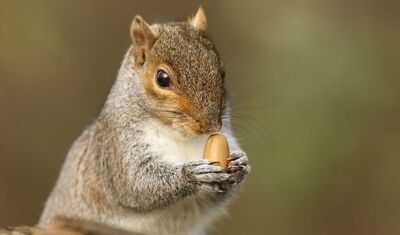
As squirrels scramble and spiders invade our homes, nature may be sounding the alarm for a winter unlike any we've seen in recent years.
Brits could be set for a long and cold winter with forboding signs being seen across the UK by its nature and wildlife, according to centuries-old myths.
Many believe that certain behaviours exhibited by animals can be used as a trusted indicator on the severity of an upcoming season, with the woolly bear caterpillar being one of these.
Based on its coat, it is rumoured the wider the brown middle band on its back revealing the milder the coming winter will be. Although, just how trustworthy a caterpillar is to be used as a weather forecaster for the weather is disputed by experts.
Similarly, squirrels are sometimes used to help determine whether or not we will have to wrap up tighter than usual during the upcoming winter months.
If you've spotted squirrels carrying extra timber this time of the year some say it could be a sign that they expect temperatures to drop more than usual, the same is said when there is a pattern of the bushy-tailed animal hoarding a large quantity of nuts to last them until the spring.
Elsewhere in the animal kingdom, spiders spinning larger webs than usual has long been gossiped about, with links to colder temperatures, but they are simply the products of larger, mature spiders.
Spiders entering homes on mass throughout autumn and winter is also commonly put down to many spider species reach maturity in the fall, leading males to explore in search of females, making them more visible in homes.
Other harbingers of a bitter season include birds, with legend stating migration patterns offer clues about upcoming weather cycles, of which birds have an intrinsic understanding.
While it's true that birds can sense a storm coming by detecting changes in atmospheric pressure, temperature, and humidity, and by hearing infrasound, early migration south is not nature's way of telling us that a cold snap is on the way.
Astronomical winter in the UK is set to begin on December 21, running until late March, according to the Met Office, though, by the meteorological calendar, the first day of winter is always December 1 ending on February 28 or 29 during a leap year.
The national weather service has described the UK as having a "remarkably sunny" year to date, but acknowledged a recent drop in temperature and dull spells across the nation.
There is a 55 per cent chance of "near average" temperatures and a 30 per cent chance of "mild" conditions, according to the Met Office's three-month outlook, with only a 15 per cent chance of a cold season.
These outlooks are linked to previous years' weather patterns and are not to be taken as absolute fact, more indicators.
You may also like

Rock and rule: Japan's first woman PM Sanae Takaichi plays heavy metal drums as hobby

Ahmedabad cracks down on illegal occupancy in PMAY EWS houses; 367 under scrutiny

HM Amit Shah to celebrate Gujarati New Year in Ahmedabad tomorrow

Six diet changes to improve your eye health that aren't carrots

What did Sam Pepper do? Kick streamer banned for injuring an 8-year-old girl in India with a firecracker






